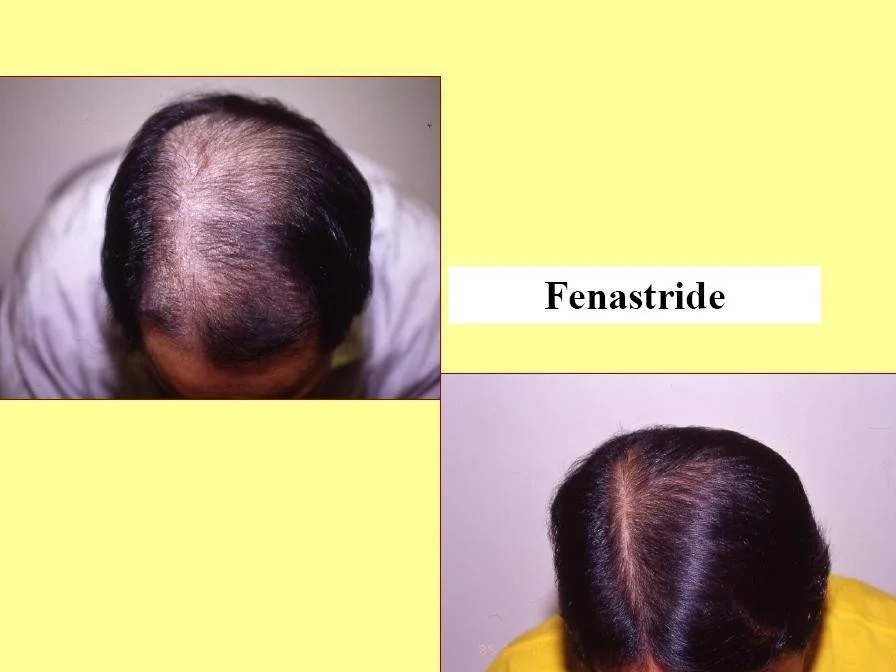Androgenetic Alopecia
(Male and Female Pattern Hair Loss)
Definition
Definition : It is a very common, potentially reversible scalp hair loss that generally spares parietal and occipital areas (Hippocratic wreath) of the scalp.
- Androgen dependent loss of scalp hair
- Androgenetic Alopecia affects up to 50% of males and 40% of females
- Autosomal dominant with variable penetrance
- 85% : +ve family history
- 5 ALPHA Reductase
- Testosterone
- DihydorTestosterone (Active)
- Miniaturization of Terminal Hairs
Male Pattern Hair Loss
درجات تساقط الشعر Stages of Hair Loss

PATTERN OF HAIR LOSS
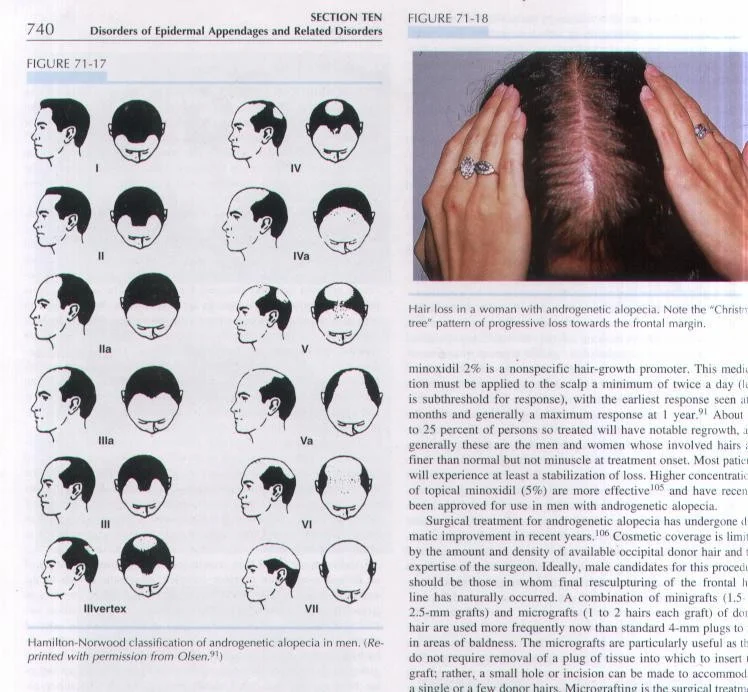
Androgenetic alopecia In women
Maintenance of frontal hair lines with only slight recession.
Etiology :
- i. Genetic Predisposition,
- ii. Androgen excess,
Ovarian cause-
- Polycystic ovarian syndrome,
- Other ovarian tumor
Female Pattern Hair Loss
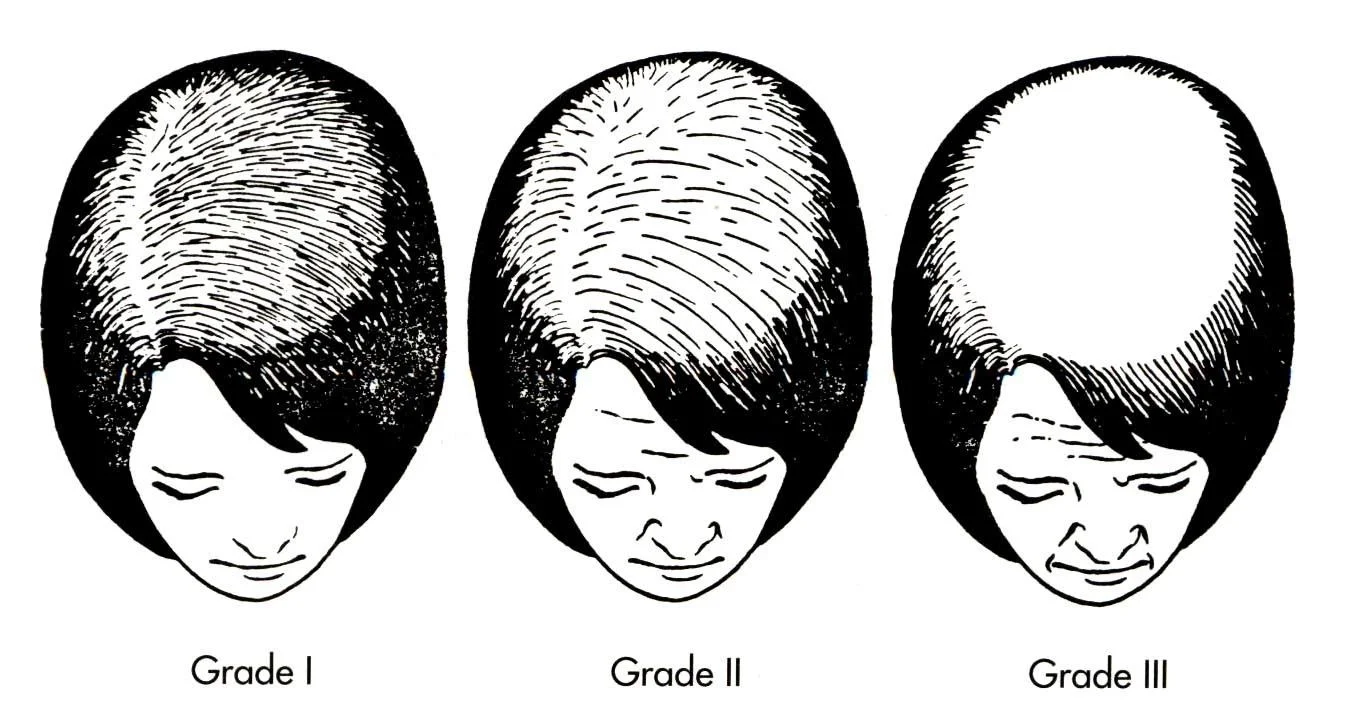
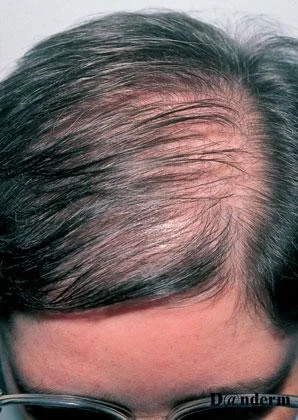
ANDROGENETIC ALOPECIA IN WOMEN
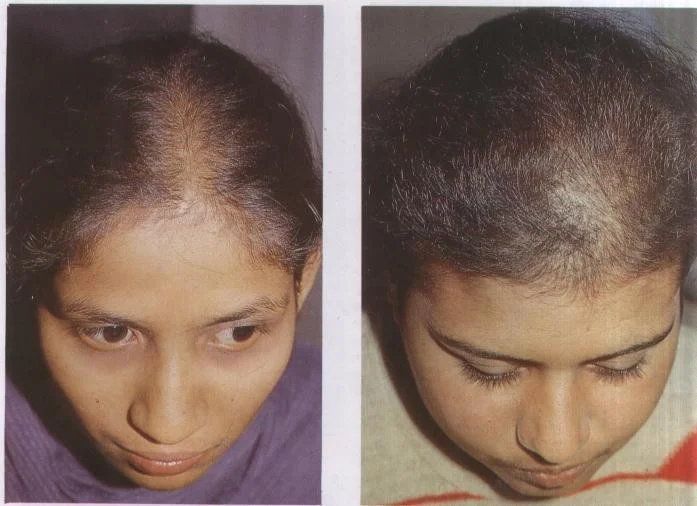
CLINICAL FEATURE
*Other evidence of androgen excess:
- Acne.
- Hirsutism.
- Menstrual irregularities.
Treatment
- Topical:Neoxidil 2%- 5% solution
- Systemic: Fenastride or Spironolactone
- Surgical treatment- Micrograft & minigraft from non-androgen dependent site (occiput).
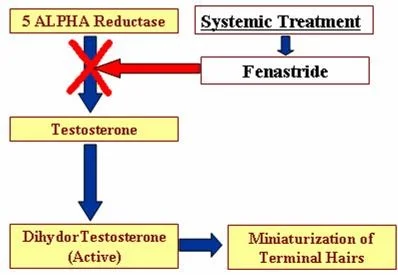
Androgenetic Alopecia (Male and Female Pattern Hair Loss)
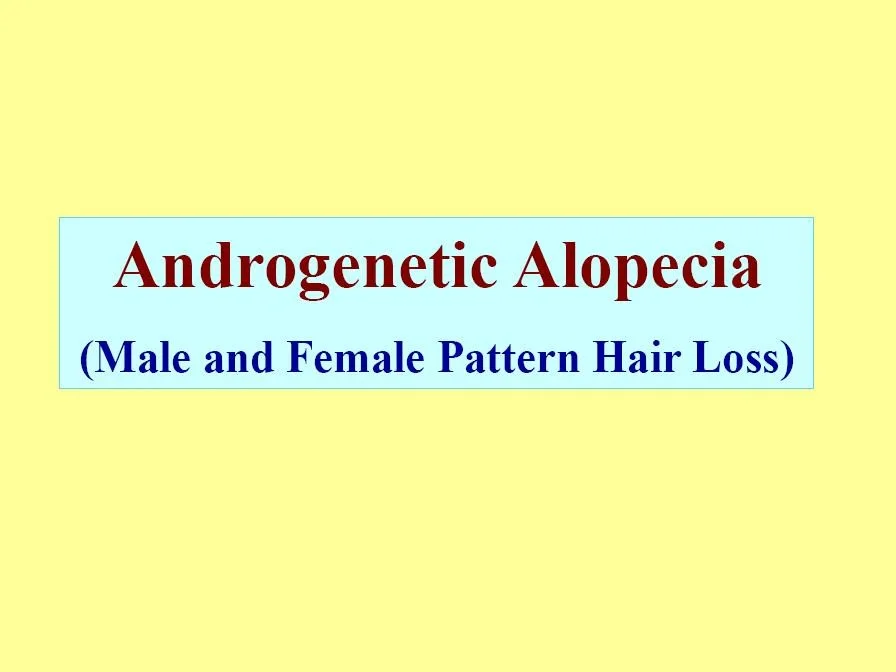
Androgenetic Alopecia (Male and Female Pattern Hair Loss)
Features
- It’s an androgen dependant hair loss.
- Androgen dependent loss of scalp hair, for e.g. the crown area.
- Androgenetic Alopecia affects up to 50% of males (and they end with baldness) and 40% of females (they rarely end with baldness; instead they end up with thinning).
- Autosomal dominant with variable penetrance.
- 85%: +ve family history
Male pattern hair loss:
- It starts with thinning, it’s called fronto- parietal recession and then it goes upwards.
- Frontal recession may occur too.
- it usually spares the Temporal and occipital areas
- In males: the last stage is complete baldness
Male Pattern Hair Loss Stages
It has 7 stages
درجات تساقط الشعر Stages of Hair Loss
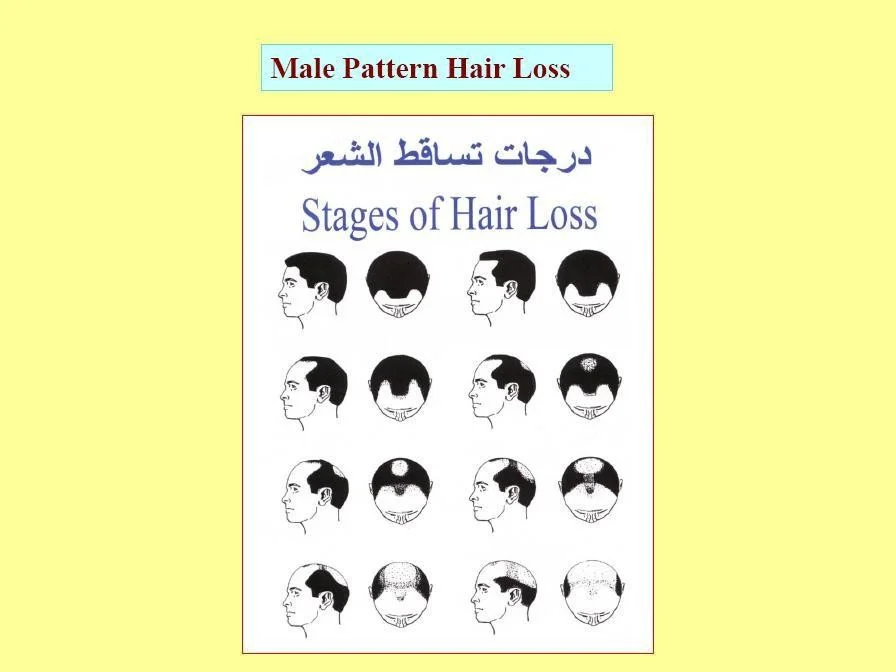
Male Pattern Alopecia Image
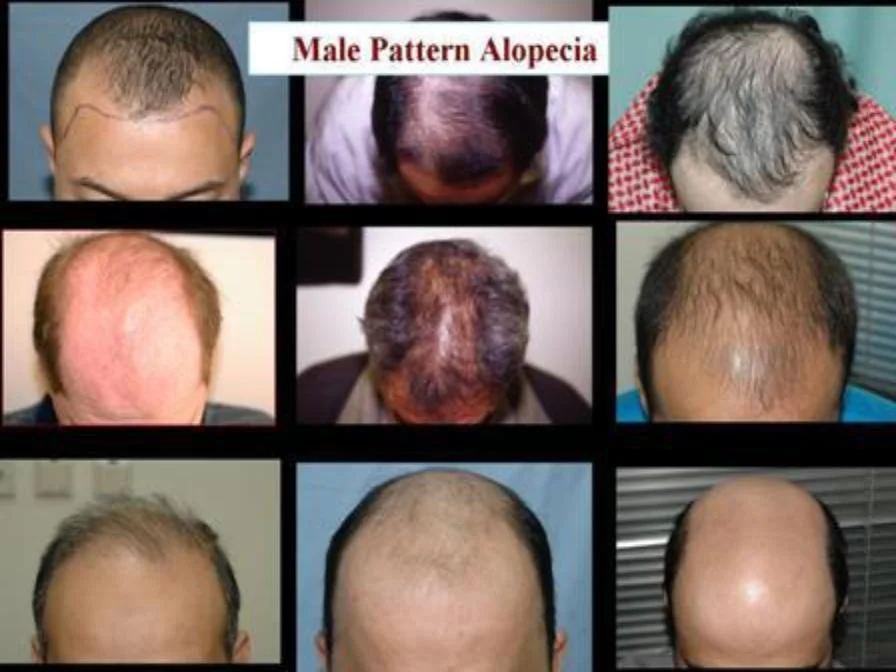
Male Pattern Hair Loss Stages
Female pattern hair loss:
- There is no fronto-parietal recession and no frontal recession, so the frontal hair line is preserved.
- In the female: There is never complete baldness, there is thinning.
- It more common in post menopausal women
Female Pattern Hair Loss Grades
Grade I Grade II Grade III
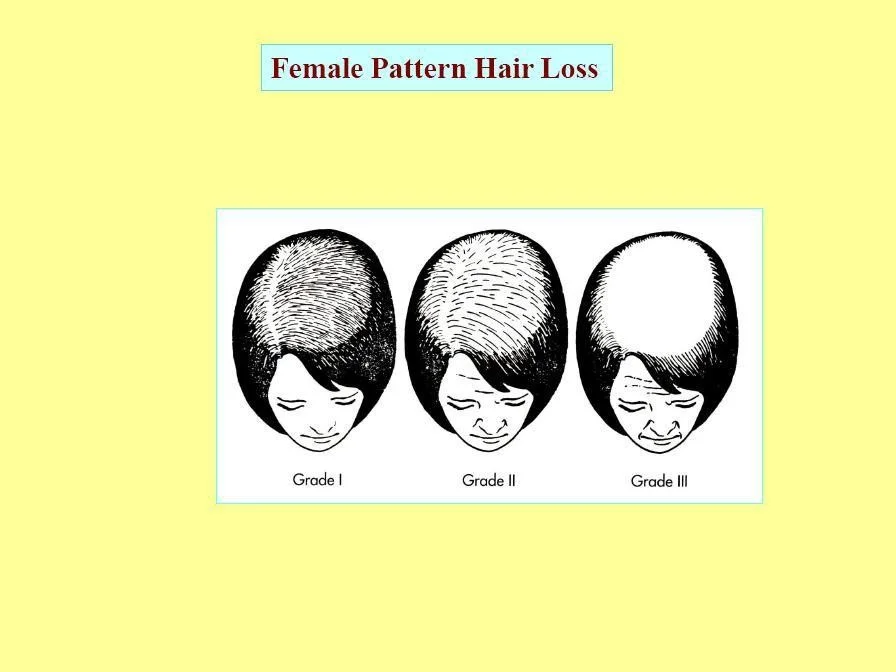
Female Pattern Alopecia Image

Pathophysiology :
- The androgen is the key pathogen in this disease as following : 5 ALPHA Reductase Testosterone ---------⇒ Dihydrotestosterone (active)
- The Dihydrotestosterone causes Miniaturization of Terminal Hairs. It becomes thin and then falls
- There is localized hypersensitivity to the normal circulating hormones.
- In this condition the hair in the androgen dependant area becomes very thin.
- You can’t see it but if you come closer you will find thin tiny hair.
- To treat this condition we have to block dihydrotestosterone, by using antiandrogens; e.g. Minoxidil. We either block it locally or systematically
Female Pattern Hair Loss Grades
Pathophysiology :
Treatment
- Lifelong treatment unlike Alopecia Areata A. Topical: - Minoxidil, 2% for females and 5% for males - Used twice per day. - Regarding females it shouldn’t be used during pregnancy B. Systemic: 1- Fenestride: * It is a 5-alpha reductase inhibitor * Side effects: - in male : feminization - in female : the pregnant with male infant only ( it affect the gonads of the infant ) 2- Spironolactone: Has an anti-adrenergic effect. C- Hair-transplantation
Minoxidil 5% Image
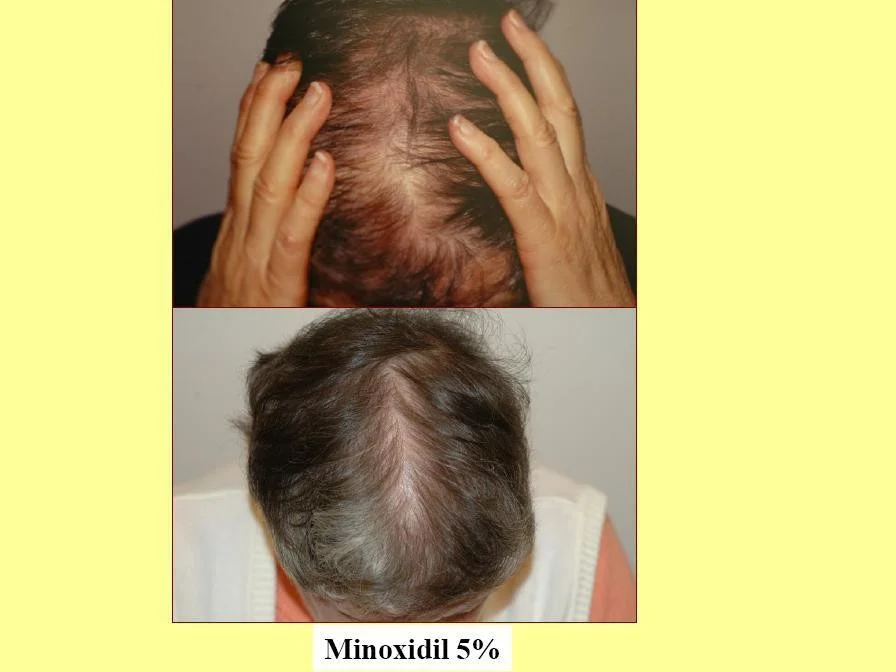
Minoxidil 2% and 5% Side effects
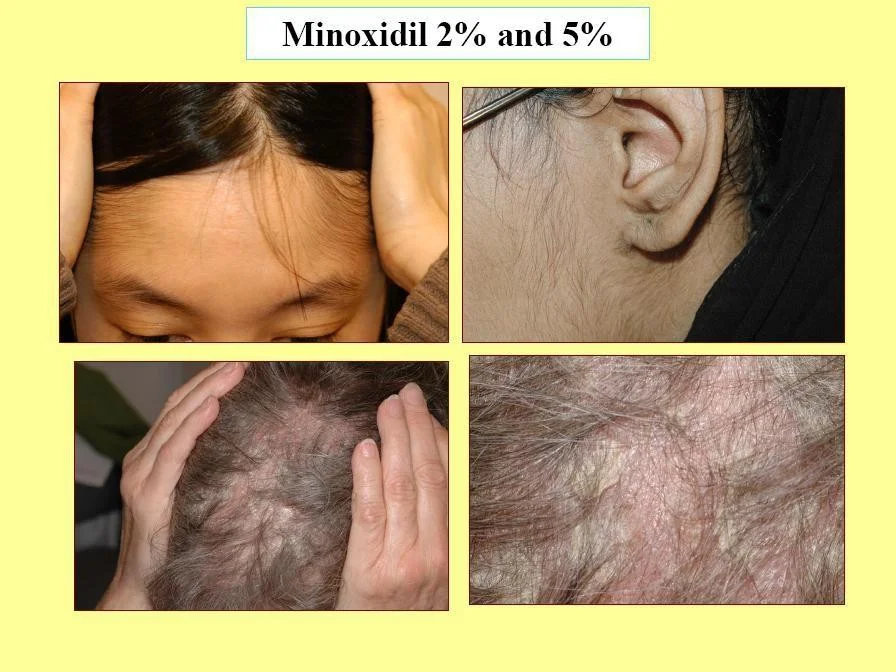
Systemic Treatment Pathophysiology Diagram
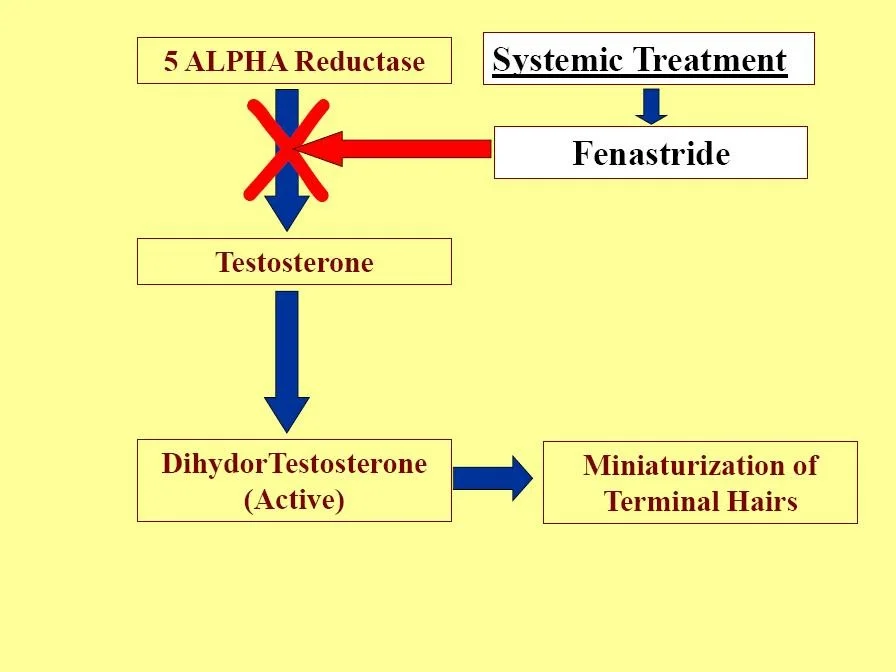
Fenastride Image
